| Trail camera photos and video taken by Ph.D. student Amanda Cheeseman during her research on the imperiled New England cottontail rabbit have been highlighted on the U.S. Fish and Wildlife Service northeast region Facebook page. Her trail camera pictures were also incorporated into the New England cottontail flickr account. The photos largely feature potential predators of the New England cottontail such as the bobcat (pictured left). The New England cottontail and the bobcat depend heavily on early successional forest, a habitat that has sharply declined throughout the northeastern U.S. |
Interdisciplinary Team Receives Grant to Use Genetic Methods for Studying Animal Dispersal3/26/2015
New England cottontails may disperse to new habitat in long distance movements of 100 meters or more, or may slowly bud a new home range off their existing one if there is adequate local habitat. Amanda will use radio-telemetry to quantify rates of long distance dispersal. To examine rates and spatial patterns of budding, she will compare DNA in pellets gathered during winter surveys to DNA in tissue collected from young and adult rabbits captured in the summer. Understanding dispersal patterns in this imperiled species is critical for planning restoration and protection of their habitat. The other researchers on the proposal were Dr. Christopher Whipps, a parasitologist and geneticist at SUNY-ESF, and Dr. Sadie Ryan, a spatial ecologist at the University of Florida.
The recent edition of the New York State Parks publication "Nature Times" details research being done by Ph.D. student Amanda Cheeseman on predator communities in New England cottontail habitat. Amanda and her research team are using camera traps and avian point surveys to compare occupancy rates of predators among different potential cottontail habitat areas. Her research will inform restoration efforts currently planned by the agency.
New England cottontail research highlighted by The Young Forest Project and NewEnglandCottontail.org8/27/2014
The research of Ph.D. student Amanda Cheeseman was featured in an article on habitat restoration at Cranberry Mountain Wildlife Management Area in eastern New York. The article was cross-posted on websites for the Young Forest Project, dedicated to conservation issues for early-successional forest, and NewEnglandCottontail.org which focuses on this imperiled species. Amanda's study examines the relative importance of habitat quality, including invasive plant species, and competition with naturalized Eastern cottontails in driving populations of New England cottontails. She will be able to look at the response of the rabbits to newly-created habitat, such as the restored areas within Cranberry Mountain.
Ph.D. Student Amanda Cheeseman wins Best Poster at American Society of Mammalogists Meeting6/11/2014
Graduate student Amanda Cheeseman won Best Overall Poster at the 94th Annual Meeting of the American Society of Mammalogists in Oklahoma City, Oklahoma this week. Amanda's poster was entitled "Survival and home range of New England Cottontail (Sylvilagus transitionalis) in response to hunting, competition, and habitat composition", and details the results of her first year of her dissertation research on cottontails in New York State. Congratulations on this well-deserved honor, Amanda!
|
Categories
All
Archives
July 2019
|
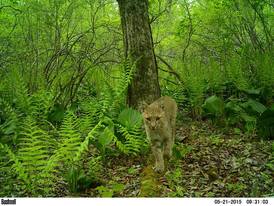
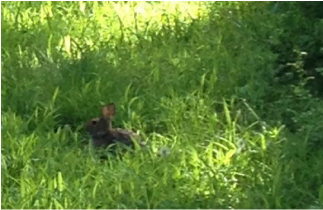
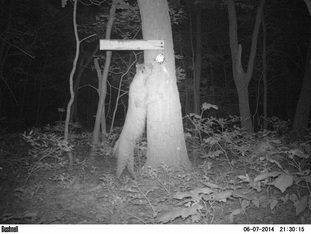
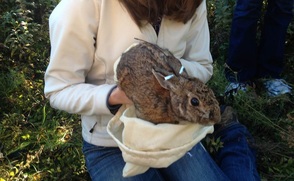
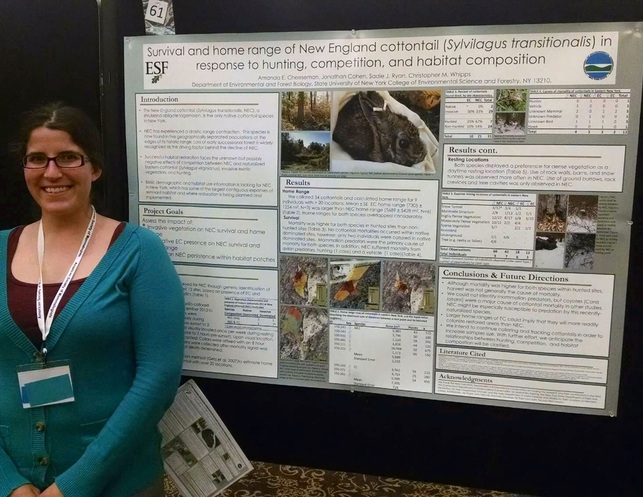

 RSS Feed
RSS Feed
